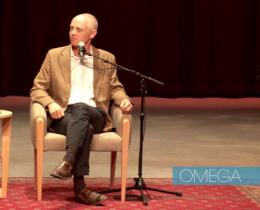Your throat is nestled in a very special place in the body. It literally connects your head to your body, acting as a member of the neck information highway. It holds up your voice like a boom operator. Despite its powerful role, it's a remarkably vulnerable, sensitive, and relatively small area. Think about all the information that needs to pass through it—between food and water going down the throat, to nonstop messages to and from the brain along the spinal column, to your own authentic voice rising up and down. There’s a built-in editorial job there; and like any fine editor, the neck only allows the most pertinent, powerful, and truthful parts of our experience to get through.
At the same time, in the nerves, muscles, and bones of our neck, we can easily feel strain coming from within us and outside of us. This reality is reflected in our language—think of colloquial phrases like: "It’s a pain in the neck," or "Stick your neck out," or more emotional turns of phrase such as, "There’s a lump in my throat," or "My heart got caught in my throat."
Being sensitive and attuned to what your throat and neck have to say is a practice that can immensely enhance your storytelling toolkit. You don’t need an agent, or special masterclass. You simply need to align with the editor that is already built within.
Here’s a gentle Narrative Healing™ practice to tap into the power of the throat as you seek and share your truth:
- To begin, let’s warm up.
- You can keep your eyes open or closed for this. Take a few deep breaths and bring your awareness to your neck and throat right now, as they actually are. Is this area relaxed? Tense? Congested? Sing-songy?
- Offer yourself small, gentle movements that are calling to you. Perhaps you want to roll your neck, or gently nod your head yes and no and maybe. For a little extra, place your hands on the back of your neck and give yourself a light massage.
- Now, find yourself and your seat. Feel the ground beneath you and relax your shoulders. Lift your face towards the sky and feel your spine elongate. Begin to focus your breathing on the area of your throat. On an inhale, breathe into the full circumference of your neck, you’re filling a balloon. Exhale to release, deflating the balloon. Repeat this breath five times.
- As you breathe, imagine the inside of our throat. Is it like a bridge? A highway? Is there another passageway speaking to you? Spend a minute in a self-guided tour of your throat, inside the container of your neck.
- Close by swallowing to allow the throat to soften even more.
Writing prompt: Visualize the throat as a passageway between your mind and your body. Describe what you see, smell, and feel as you move along the passageway. What is the environment like? Is it crowded? Empty? Fast? Slow? Is anyone else there? Use your imagination. Write freely for ten minutes as you explore.




